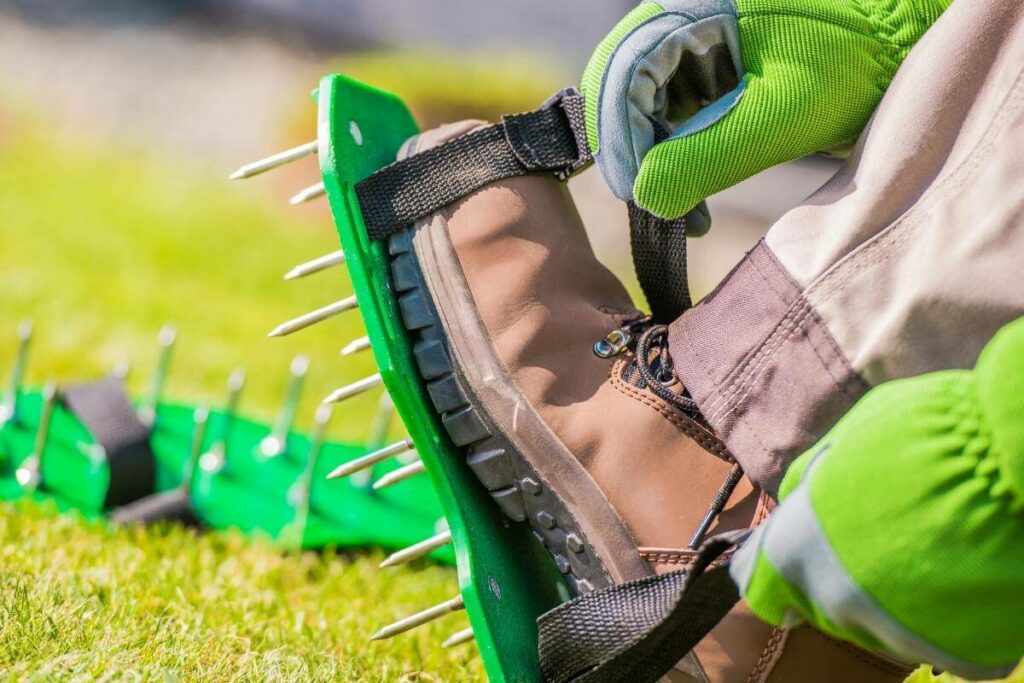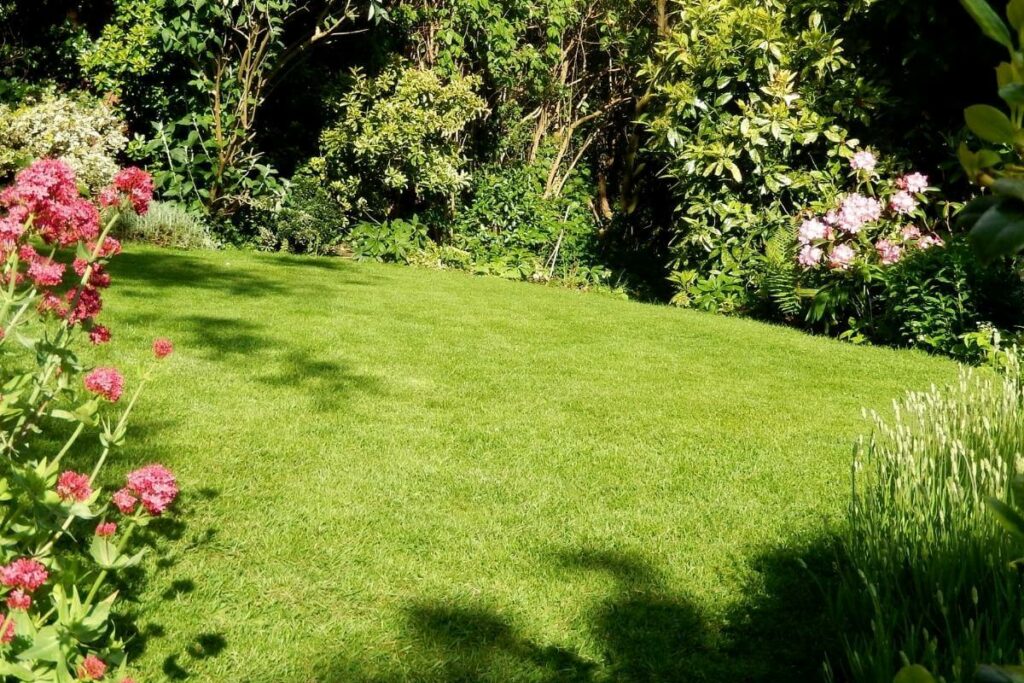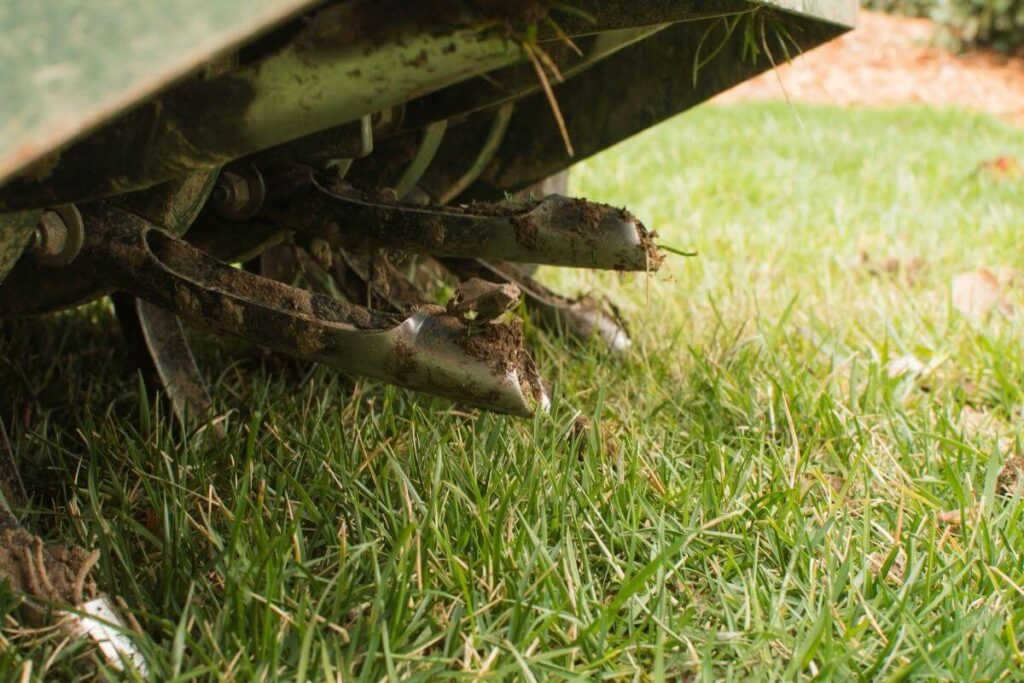Aerating a lawn is one of the best ways to help with its drainage. It involves perforating the lawn so that water, oxygen, and nutrients can flow easily to the grassroots. If your lawn is constantly getting clogged with water, has bare spaces, or has unhealthy, yellowish grass, then you ought to seriously consider aerating it.
A beautiful, lush, and healthy lawn is one that is getting enough of the requirements as mentioned earlier to enable it to maintain its optimal status.
However, some lawns get a lot of foot traffic, are newly constructed, or are suffocated by thatch.
These lawns need to be aerated regularly to enhance the water flow in the topsoil for the lawn to grow beautifully.
How to Aerate a Lawn?

As we have already mentioned, aerating a lawn involves perforating the soil and the thatch covering the soil to prevent water clog.
This entails creating small but pretty deep holes in the soil so that water and nutrients can flow through the soil and reach the roots of the grass.
The methodology will depend on the type of equipment you are using.
Whichever way, you should ensure that you start from the edge of the lawn and work systematically so that you cover every part of the lawn.
Core Aeration
Core aeration is an intense and very effective method of aeration.
Also known as plug aeration, it is done using machines with tines that punch into the soil to remove plugs of soil and thatch that prevent water and nutrients from flowing.
Core aeration leaves holes all over the lawn to ease soil compaction and, therefore, create room for water, oxygen, and nutrients to flow into the soil and enable the grass to flourish.
Good To Know: This method of aerating is a relatively more permanent solution because you get to the ‘root’ of the matter, allowing grass to regrow in a healthy manner.
Spike Aeration
This method of aeration is simpler but less effective compared to core aeration.
It uses machines with spikes, and sometimes the spikes can be attached to boots. Thus, it is perfect for you if you are a DIY junkie.
While the core aeration method works by removing small plugs of soil and thatch from the ground, the spike aeration method works by pushing them in.
Due to the simplicity of its execution, the spike method is comparatively cheaper.
However, it does not hold up for long because you will not have created adequate breathing room for your grass.
Therefore, you will have to repeat the process soon after.
How Does Aerating a Lawn Help with Drainage?
Aeration breaks through the compact soil and thick thatch that accumulates on lawns when neglected or when people keep walking or playing on them.

A lawn with compact soil and thatch build-up lacks breathing space; therefore, drainage becomes a problem, and water collects on the surface.
Not only is this unsightly, but also detrimental to the wellbeing of the grass and, subsequently, the outlook of your lawn.
Without aeration, grassroots will not have access to nutrients and water. There will not be a passageway for them through the compact soil and thatch.
Thus, the grass will starve, and weeds will flourish. Therefore, aeration enables grassroots to acquire nutrients, water, and air, which stimulate their growth.
Also, aeration ensures that water drains through the soil instead of clogging on the surface. This enhances the image of your lawn.
Furthermore: It promotes the grass’s absorption and uptake of nutrients, and ultimately, your lawn will be all green and healthy.
How Do You Know That Your Lawn Needs Aeration?

There are several tell-tale signs that your lawn needs to be aerated.
However, it is not always apparent that some aeration needs to be done, so it is wise to keep doing it regularly.
Even so, the following are the signs that you ought to aerate your lawn with immediate effect:
- When the surface of the lawn is hard. You will probably notice this when you try to sink a hoe or a shovel into the lawn, but it won’t penetrate the soil easily. This means that the soil is compact and closed up, so creating some breathing space would be necessary.
- When the lawn has thatch that is thicker than half an inch. Thick thatch blocks the airways and passageways of the soil. This means that water and nutrients can’t reach the root of the grass. Therefore, you want to aerate your lawn by getting rid of the thatch.
- When water clogs on the surface for too long. If water puddles form on the surface of the lawn and take hours to drain away, that is a clear sign that your lawn needs aeration. Ideally, water should drain immediately or within a few minutes. Aeration will improve the drainage of your lawn.
- When the grass is growing in patches. Grass grows well when it receives adequate water and nutrients. Therefore, if it is not growing at all in some areas, it means that it does not have access to any of those things, hinting at poor drainage. Aerating the lawn will salvage the situation.
- When the soil has high clay content. Clay soil is one of the most compact soil types. This means that it leaves little to no room for water drainage or the flow of air and nutrients. If there is high clay content in your lawn, you will have to regularly aerate it.
- When there is frequent human traffic/activity on the lawn. Human traffic, in this case, could mean people walking on the lawn, children playing on it, or vehicles being driven and parked on the lawn. These activities cause the soil to clump together, preventing proper drainage. If people tend to carry out different activities on your lawn, consider aerating it frequently.
When Is the Best Time to Aerate Your Lawn?
The best time to aerate your lawn will depend on the type of grass on it. Naturally, you want to aerate the lawn during the beginning of the grass’ growing period. For instance, if it is a warm-season grass, the best time to aerate the lawn would be during the warmer months, that is, anywhere between mid-spring and early summer. Similarly, the best time to aerate a lawn with cool-season grass would be early fall.
Therefore, it is important to know what type of grass you have on your lawn. Moreover, it is prudent to aerate your lawn if you notice any of the factors in the section above.
For Example: If the ground on the lawn is hard, then you should consider aerating your lawn.
Final Thoughts
Aerating a lawn involves creating holes in the soil to improve drainage.
This way, water, nutrients, and air can flow easily through the soil to the grassroots. Healthy grass leads to a lush, green lawn that will be relaxing to look at.
There are several ways to tell that a lawn needs aeration. For one, the soil is so hard that a shovel or a hoe can’t go through. Secondly, it will have bare patches in some areas.
Third, water will clog on the surface for a long time because it lacks proper drainage.
All in all, put in the work and aerate your lawn as often as required to achieve that lush, healthy, green look.


